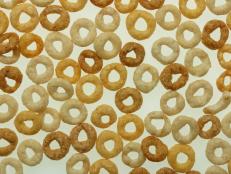Sodium 101: Shaking the Salt Habit

Did you know that about 10-15% of the population is salt sensitive? That means when those folks eat too much salt, their blood pressure rises. Excessive salt intake is also a contributing factor to heart disease. Because we can't usually pinpoint who exactly has a salt sensitivity, you may not even know you're at risk for high blood pressure. To play it safe, pay close attention to where sodium lurks in your diet.
According to the National Heart, Lung and Blood Institute (NHLBI) 65 million adults have high blood pressure -- that’s about 1 in 3 people! If you have a family history of high blood pressure, are overweight or don't get much exercise, you have greater likelihood than most.
A blood pressure level of 140/90 mmHg or higher is considered high. Anybody with high blood pressure is at risk for heart attacks and stroke. About 90% of middle-aged adults have high blood pressure these days -- that's a lot of people at risk. Fortunately, there is a way to prevent it.
According to the NHLBI, four of the six things you can do to prevent high blood pressure are related to food.
- Follow DASH: Dietary Approaches to Stop Hypertension (DASH) is an eating plan that has been scientifically proven to lower blood pressure and cholesterol. This diet emphasizes fruits, veggies, low-fat dairy and is low in total fat, saturated fat and cholesterol. It includes eating whole foods such as whole grains, poultry, fish, nuts and small amounts of red meats, sweets, fats and sugary drinks. You can learn more about the plan here.
- Reduce salt in your diet: The current sodium recommendation is 2,400 milligrams per day, which is equal to a teaspoon of salt. According to the Mayo Clinic, 77% of the salt you consume comes from prepared and packaged foods -- that means those salty snacks, take-out, frozen and canned foods and salty condiments (i.e. dressings and jarred sauces).
- Maintain a healthy weight: Knowing your body mass index (BMI) and if you are at a healthy weight is essential. Find out where you stand by using the NHLBI's BMI calculator.
- Limit alcohol: Drinking too much alcohol can raise blood pressure. Limit your alcohol to a maximum of 1 to 2 drinks per day for women and men, respectively. One drink is 12 ounces of beer, 5 ounces of wine or 1.5 ounces of an 80-proof liquor (like whiskey).
The NHLBI has more info on the other two ways to prevent high blood pressure.
Fresh herbs and spices easily add sodium-free flavor to dishes. Knowing which combinations to use on your recipes is the key -- like in this Basil-Flavored Shrimp. This handy guide has helpful hints for bringing out the best flavors.
When buying ground spices, avoid titles with the word “salt” -- that is, garlic salt or onion salt. Choose garlic and onion powder instead. Mrs. Dash also makes various salt-free blends. Other salt-free flavorings include fresh citrus juices or vinegars, which go perfectly with fish and veggies.
-
Low-sodium recipes:



























